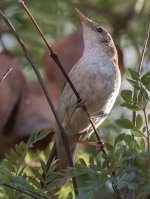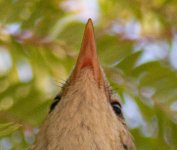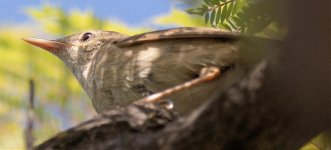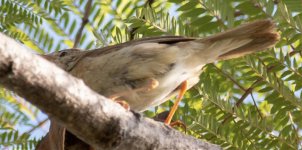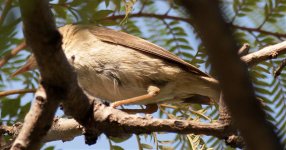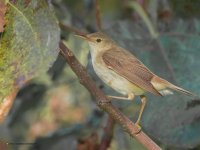PedroNicolau
Well-known member
Hi all,
I watched this warbler on Sep 8th at Doca de Faro, in the Algarve (Portugal).
In the field, I saw a medium-sized warbler, Melodious-like, which was clearly whitish below with no traces of yellow, and was dull brown above with no visible contrast in the plumage. The bird kept feeding actively always at the top of the trees, making it a bit hard to follow, but still provided good views, although mostly of the underparts.
The are a few weird aspects about this bird for me, and so I have decided to put it up here for judgement, hoping someone might help shed a light on its ID.
Other photos here: https://ebird.org/checklist/S73354988
Many thanks for your help
Pedro
I watched this warbler on Sep 8th at Doca de Faro, in the Algarve (Portugal).
In the field, I saw a medium-sized warbler, Melodious-like, which was clearly whitish below with no traces of yellow, and was dull brown above with no visible contrast in the plumage. The bird kept feeding actively always at the top of the trees, making it a bit hard to follow, but still provided good views, although mostly of the underparts.
The are a few weird aspects about this bird for me, and so I have decided to put it up here for judgement, hoping someone might help shed a light on its ID.
Other photos here: https://ebird.org/checklist/S73354988
Many thanks for your help
Pedro




